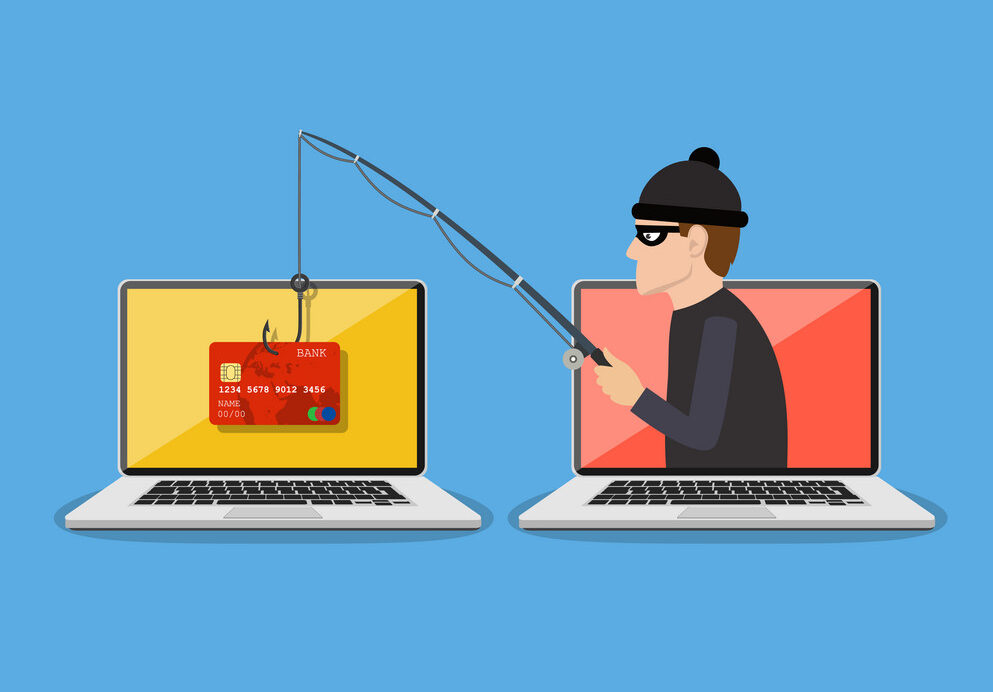
Protect yourself from financial fraud
- November 25, 2021
- 0
According to the National Crime Records Bureau (NCRB), 50,035 cases of cyber crime were reported in India in the year 2020, which is 11.8 percent compared to a year ago. The Reserve Bank of India (RBI) has recently alerted bank consumers about fraud once again. In fact, certain types of fraud are more common than others and being aware of them is the first step towards keeping yourself safe.
KYC fraud
Some people stopped visiting bank branches during the pandemic, giving fraudsters an excuse to update their Know Your Customer (KYC) documents as an opportunity for fraud. The way fraudsters work is simple. They send an SMS message to the customer warning that his card or bank account will be blocked. The customer receiving this message takes action without considering its validity. When he calls the number given in the SMS, he is asked to provide personal details in the name of verifying his KYC details. For example, you are asked about account and login details, card number and CVV, PIN number and OTP. Fraudsters can also ask panicked customers to download a remote access app to their phones, which gives them complete control over the phone. Once the phone is under control, the fraudster hacks all the bank information entered in it and then withdraws the amount kept in the account. On the other hand, the account holder comes to know about it when the messages of withdrawal of money start coming on his phone.
How to avoid
Remember that KYC update is never done through any third party app. In case of receiving SMS from unknown number, contact the bank or card provider company immediately. For this, the number mentioned on the back of the card or call customer care. Even the customer care number of the bank should not be searched on the internet because many times fraudsters keep putting fake numbers on the web as well.
UPI fraud
Unified Payments Interface (UPI) is a feature in which you or the merchant can send money collection requests to the user. Fraudsters are using this feature to cheat on second shopping sites. When you want to sell an item on such a site, fraudsters show interest in buying it and send a request to collect money instead of sending money. Remember there is no need to authorize the transaction while sending money to your account but fraudsters create similar illusion in front of you and you share your PIN after which the money is withdrawn from the account.
What to do
Remember that you do not have to provide any PIN or OTP while the money is credited to your bank account. Similarly, when you are asking for money in UPI, you do not need to enter any PIN number. Take the same care of your PIN as you would your ATM PIN. Never tell anyone about this.

वित्तीय धोखाधड़ी से खुद को रखें सुरक्षित
राष्ट्रीय अपराध रिकॉर्ड ब्यूरो (एनसीआरबी) के मुताबिक वर्ष 2020 में भारत में साइबर अपराध के 50,035 मामले सामने आए थे जो एक साल पहले की तुलना में 11.8 फीसदी है। भारतीय रिजर्व बैंक (आरबीआई) ने हाल ही में बैंक उपभोक्ताओं को एक बार फिर धोखाधड़ी को लेकर सजग किया है। असल में, खास तरह की धोखाधड़ी दूसरों की तुलना में अधिक होती हैं और उनको लेकर जागरुक होना खुद को सुरक्षित रखने की दिशा में पहला कदम है।
केवाईसी धोखाधड़ी
महामारी के दौरान कुछ लोगों ने बैंक शाखाओं तक जाना बंद कर दिया जिससे धोखेबाजों को ग्राहक के बारे में जानो (केवाईसी) संबंधी कागजात अद्यतन कराने का बहाना धोखाधड़ी के एक मौके के रूप में मिल गया। जालसाजों का काम करने का तरीका सरल है। वे ग्राहक को एक एसएमएस संदेश भेजकर यह चेतावनी देते हैं कि उसका कार्ड या बैंक खाता ब्लॉक कर दिया जाएगा। यह संदेश पाने वाला ग्राहक उसकी वैधता पर विचार किए बगैर कदम उठा लेता है। जब वह एसएमएस में दिए गए नंबर पर कॉल करता है तो उसे अपनी केवाईसी जानकारी की पुष्टि के नाम पर निजी विवरण देने को कहा जाता है। मसलन, आपसे खाते एवं लॉगिन का ब्यौरा, कार्ड नंबर एवं सीवीवी, पिन नंबर एवं ओटीपी के बारे में पूछा जाता है। जालसाज घबराए ग्राहकों को एक रिमोट एक्सेस ऐप भी अपने फोन पर डाउनलोड करने को कह सकते हैं जिससे उन्हें फोन का पूरा नियंत्रण मिल जाता है। एक बार फोन पर नियंत्रण होते ही जालसाज उसमें दर्ज सारी बैंक जानकारियों को हैक कर लेता है और फिर खाते में रखी रकम निकाल लेता है। दूसरी तरफ खाताधारक को इसकी जानकारी तब होती है जब उसके फोन पर पैसा निकाली के संदेश आने लगते हैं।
कैसे बचें
याद रखें कि कभी भी केवाईसी अपडेट किसी थर्ड पार्टी ऐप के जरिये नहीं संचालित होता है। अनजान नंबर से एसएमएस मिलने पर बैंक या कार्ड प्रदाता कंपनी से फौरन संपर्क करना चाहिए। इसके लिए कार्ड के पिछले हिस्से पर दर्ज नंबर या कस्टमर केयर पर फोन करना चाहिए। यहां तक कि इंटरनेट पर बैंक के कस्टमर केयर का नंबर भी सर्च नहीं करना चाहिए क्योंकि कई बार जालसाज वेब पर भी फर्जी नंबर डालकर रखते हैं।
यूपीआई से जुड़ी धोखाधड़ी
यूनिफाइड पेमेंट्स इंटरफेस (यूपीआई) एक ऐसा फीचर है जिसमें आप या मचेंट उपयोगकर्ता को पैसे संग्रह का अनुरोध भेज सकता है। जालसाज इस फीचर का इस्तेमाल सेकंड शॉपिंग साइट पर धोखाधड़ी में कर रहे हैं। जब आप ऐसी किसी साइट पर कोई सामान बेचना चाहते हैं तो जालसाज उसकी खरीद में दिलचस्पी दिखाते हैं और पैसा भेजने के बजाय पैसा इकट्ठा करने का अनुरोध भेज देते हैं। याद रखें कि आपके खाते में पैसा भेजे जाते समय लेनदेन को अधिकृत करने की जरूरत नहीं होती है लेकिन धोखेबाज आपके सामने ऐसा ही भ्रम फैलाते हैं और आप अपना पिन साझा कर देते हैं जिसके बाद खाते से रकम निकाल लेते हैं।
क्या करें
इस बात को याद रखें कि आपके बैंक खाते में पैसे आते समय आपको कोई भी पिन या ओटीपी नहीं देना पड़ता है। इसी तरह जब आप यूपीआई में पैसे मंगा रहे हैं तो भी आपको कोई पिन नंबर डालने की जरूरत नहीं होती है। अपने पिन का उतना ही ध्यान रखें जैसा आप अपने एटीएम पिन का करते हैं। इसके बारे में कभी भी किसी को न बताएं।
































































